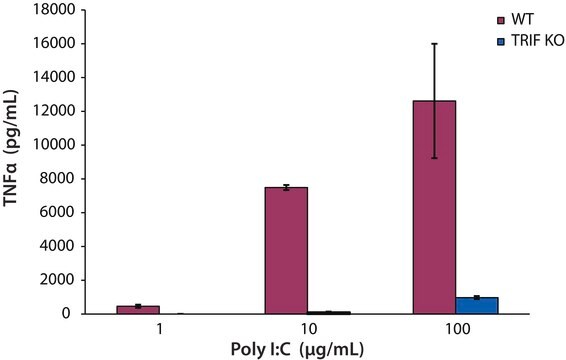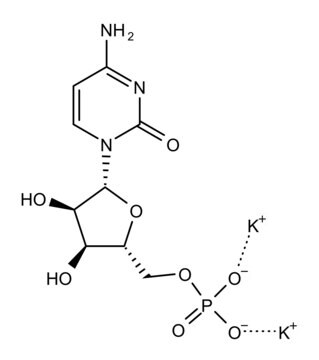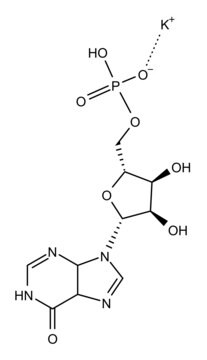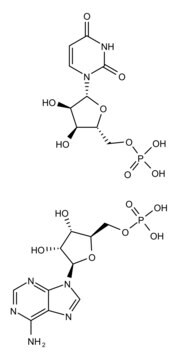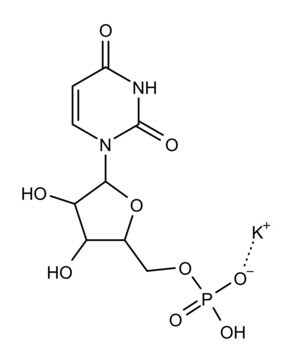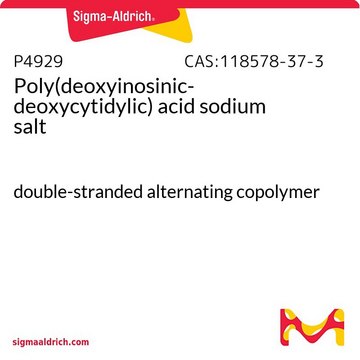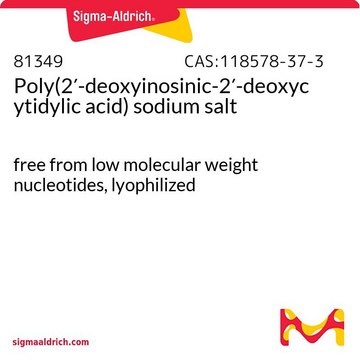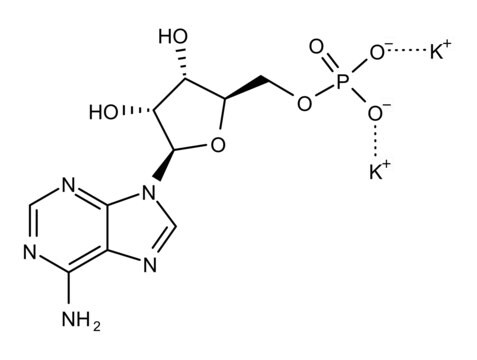I3036
Polyinosinic–polycytidylic acid potassium salt
γ-irradiated
Sinonimo/i:
Poly (I:C), Poly(I) • Poly(C)
Autenticatiper visualizzare i prezzi riservati alla tua organizzazione & contrattuali
About This Item
Prodotti consigliati
Cerchi prodotti simili? Visita Guida al confronto tra prodotti
Azioni biochim/fisiol
Transfection of Poly (I:C) into NIT-1 cells has been used as a model of intracellular dsRNA-induced β cell apoptosis. Eighteen hours post transfection, 45% of the cells were apoptotic with an increase in NF-kB, p50/p65 nuclear translocation, and cleavage of caspases 3 and 8, as well as transcriptional induction of caspase 12, Fas, IL-15, and the TNF receptor-associated ligand (TRAIL). It has been suggested that Poly(I:C) is one of the most appropriate generators of stable mature dendritic cells (DC). These mature DC might generate in vivo effective immune responses after injection due to their ability to secrete bioactive IL-12 after CD40 ligation. Poly (I:C) was used as a potent adjuvant to enhance the specific anti-tumor immune responses against a peptide-based vaccine.
Confezionamento
Package size based on polynucleotide content
Altre note
Double-stranded homopolymer.
Stato fisico
10% Poly (I:C) with sodium chloride and sodium phosphate buffer salts
Codice della classe di stoccaggio
11 - Combustible Solids
Classe di pericolosità dell'acqua (WGK)
WGK 3
Punto d’infiammabilità (°F)
Not applicable
Punto d’infiammabilità (°C)
Not applicable
Certificati d'analisi (COA)
Cerca il Certificati d'analisi (COA) digitando il numero di lotto/batch corrispondente. I numeri di lotto o di batch sono stampati sull'etichetta dei prodotti dopo la parola ‘Lotto’ o ‘Batch’.
Possiedi già questo prodotto?
I documenti relativi ai prodotti acquistati recentemente sono disponibili nell’Archivio dei documenti.
I clienti hanno visto anche
Lingjun Meng et al.
Proceedings of the National Academy of Sciences of the United States of America, 112(35), 11007-11012 (2015-08-19)
Systematic inflammation contributes to the development of many diseases, including cardiovascular disease, which is the leading cause of mortality worldwide. How such inflammation is initiated and maintained throughout the course of disease remains unclear. In the current study, we report
Il team dei nostri ricercatori vanta grande esperienza in tutte le aree della ricerca quali Life Science, scienza dei materiali, sintesi chimica, cromatografia, discipline analitiche, ecc..
Contatta l'Assistenza Tecnica.
